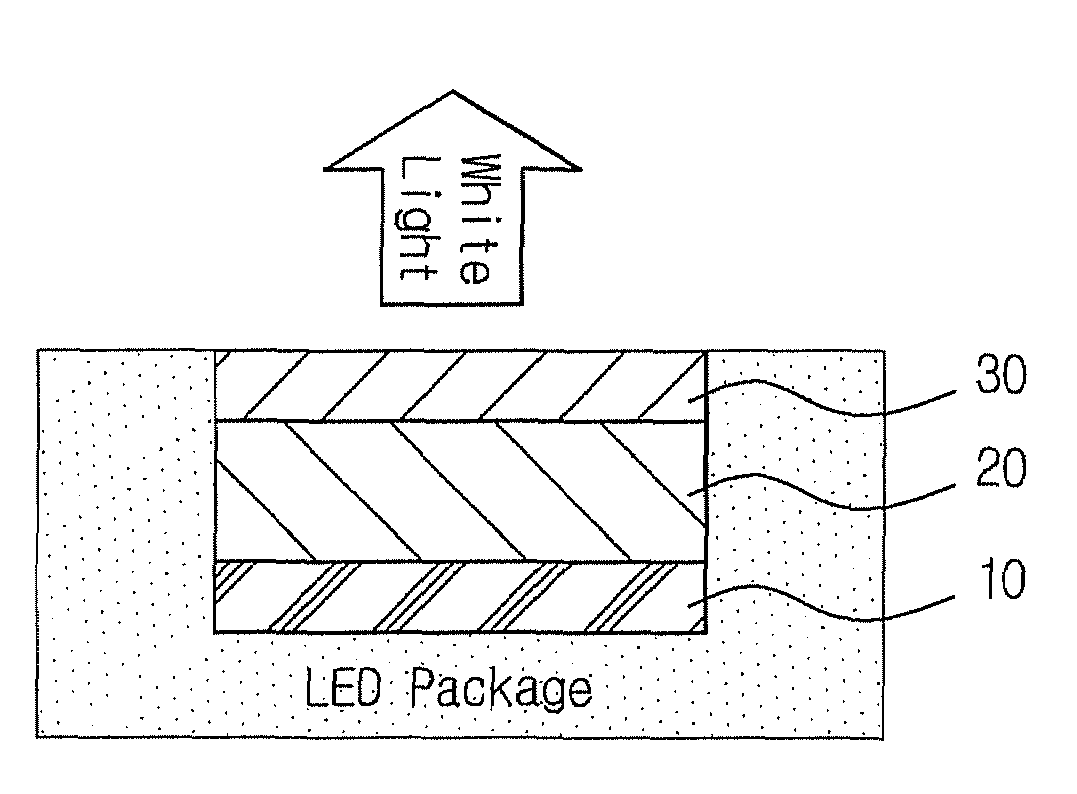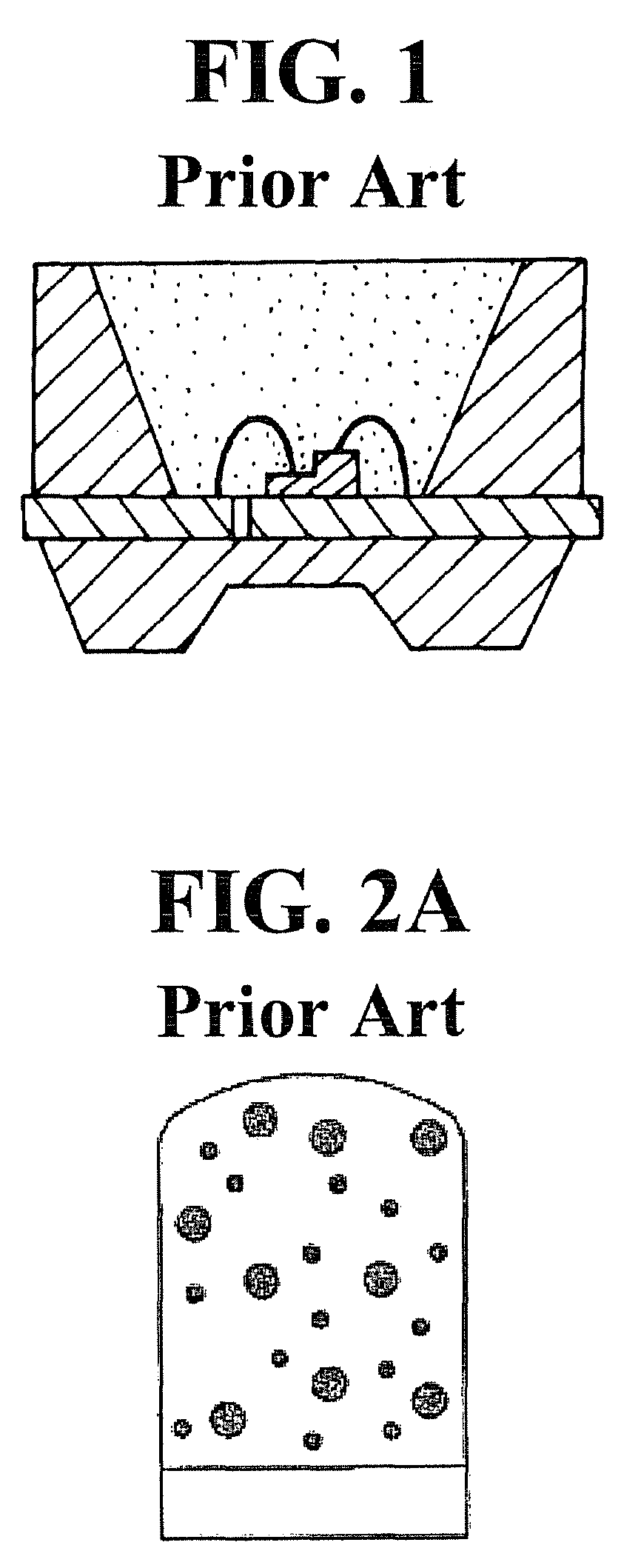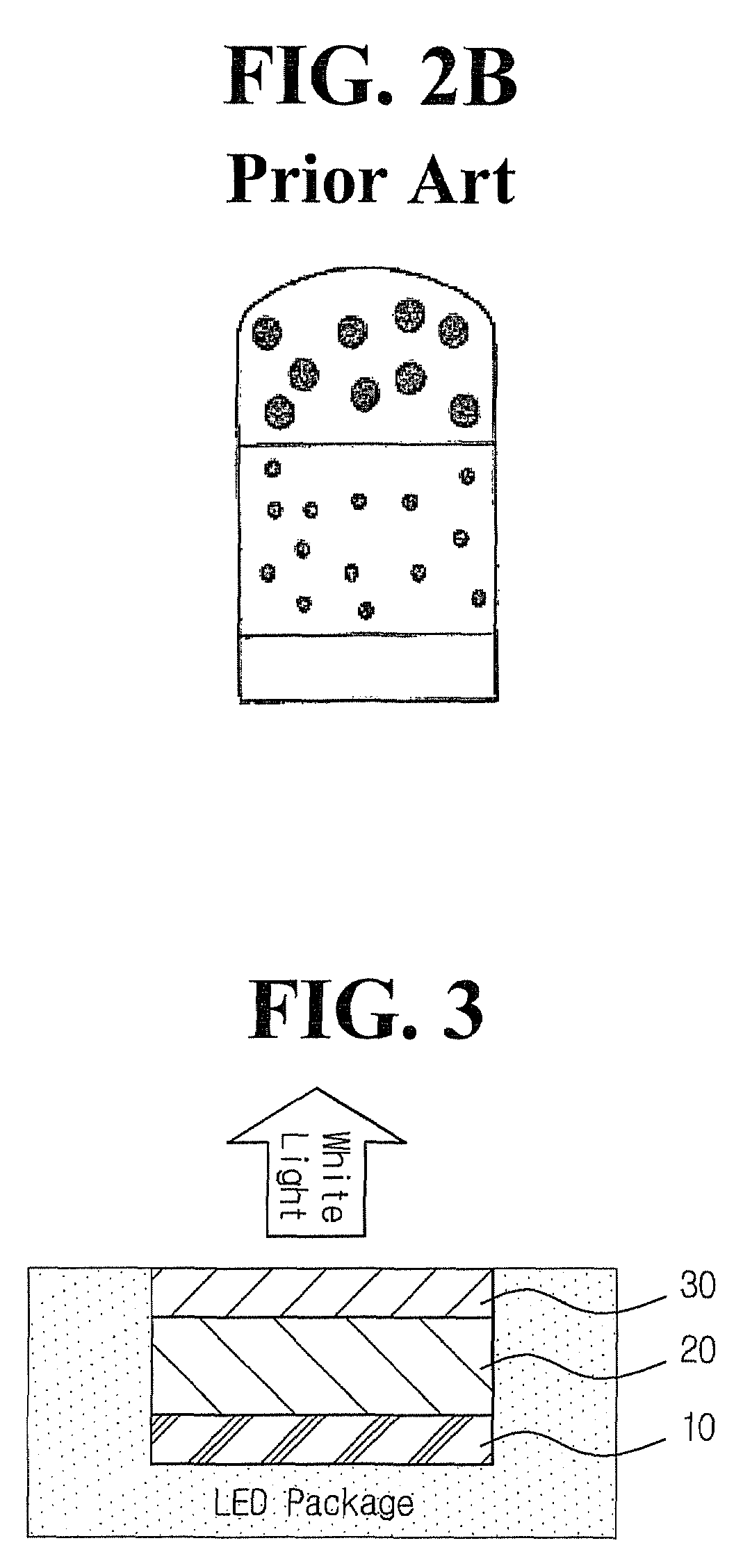Multilayered white light emitting diode using quantum dots and method of fabricating the same
a light-emitting diode and multi-layered technology, applied in the field of multi-layered white light-emitting diodes, can solve the problems of large product size, low color rendering index, etc., and achieve the effect of superior luminescence efficiency, low luminescence efficiency, and optimized chip efficiency
- Summary
- Abstract
- Description
- Claims
- Application Information
AI Technical Summary
Benefits of technology
Problems solved by technology
Method used
Image
Examples
example 1
Fabrication of Multilayered White LED
[0077]As a UV LED chip, a 400 nm λmax chip (commercially available from Photonix) was used.
[0078]A phosphor comprising (Ba,Eu) (Mg,Mn)Al10O17 (commercially available from Kasei Optonix) as a green phosphor and Sr4Al14O25:Eu,Dy (commercially available from Nemoto & Co.) as a blue phosphor mixed at a weight ratio of 1:3 was blended with polydimethyl siloxane (“PDMS”) (EG6301, commercially available from Dow Corning) at a weight ratio of 1:1, and then applied on the UV LED chip, thus forming a first film.
[0079]Subsequently, the CdSe red quantum dots (λmax=589 nm) of Preparative Example 1 were dispersed in PDMS (EG6301, commercially available from Dow Corning) at a weight ratio of 1:10000 using a silicon dispersant, applied on the phosphor mixture layer and then burned, thus forming a second film.
experimental example 1
[0080]The multilayered white LED thus fabricated was measured with respect to a change in spectrum over time under the following conditions.[0081]Driving Current: 350 mA[0082]Cooling: Sufficient cooling using a thermoelectric cooler[0083]Measurement: Measurement for 38 hours at 1 min intervals
[0084]The results are given in FIG. 5. As shown in FIG. 5, the luminescence efficiency in response to the quantum dots increased over time and then stabilized, instead of decreasing as in the case of UV light. That is, a blue shift phenomenon, due to the reduction in the size of the quantum dots by UV light, was not observed.
[0085]Further, as is apparent from FIG. 5, the white LED of the present invention was confirmed to have distinct blue, green and red wavelengths and to realize stable white light through the emission of red light from the red quantum dots excited by visible light emerging from the blue and green phosphors.
experimental example 2
[0086]In order to evaluate the stability of the quantum dots to UV light, the red quantum dots were mixed with PDMS, applied on the UV LED, and then measured with respect to the change in intensity of luminescence of the quantum dots upon initial driving and after 100 hours of driving under near UV light of about 400 nm. The results are given in FIG. 6.
[0087]As shown in FIG. 6, after the 100 hours of driving, the intensity did not change in the UV wavelength range, but the luminescence of the red quantum dots was drastically decreased, and thus the peak emission wavelength was blue shifted.
[0088]That is, in the case of semiconductor nanoparticles having a CdSe core, they were confirmed to have stability problems, such as change of peak emission wavelength and low luminescence efficiency in the UV light range of about 390 nm to about 410 nm.
PUM
 Login to View More
Login to View More Abstract
Description
Claims
Application Information
 Login to View More
Login to View More - R&D
- Intellectual Property
- Life Sciences
- Materials
- Tech Scout
- Unparalleled Data Quality
- Higher Quality Content
- 60% Fewer Hallucinations
Browse by: Latest US Patents, China's latest patents, Technical Efficacy Thesaurus, Application Domain, Technology Topic, Popular Technical Reports.
© 2025 PatSnap. All rights reserved.Legal|Privacy policy|Modern Slavery Act Transparency Statement|Sitemap|About US| Contact US: help@patsnap.com



